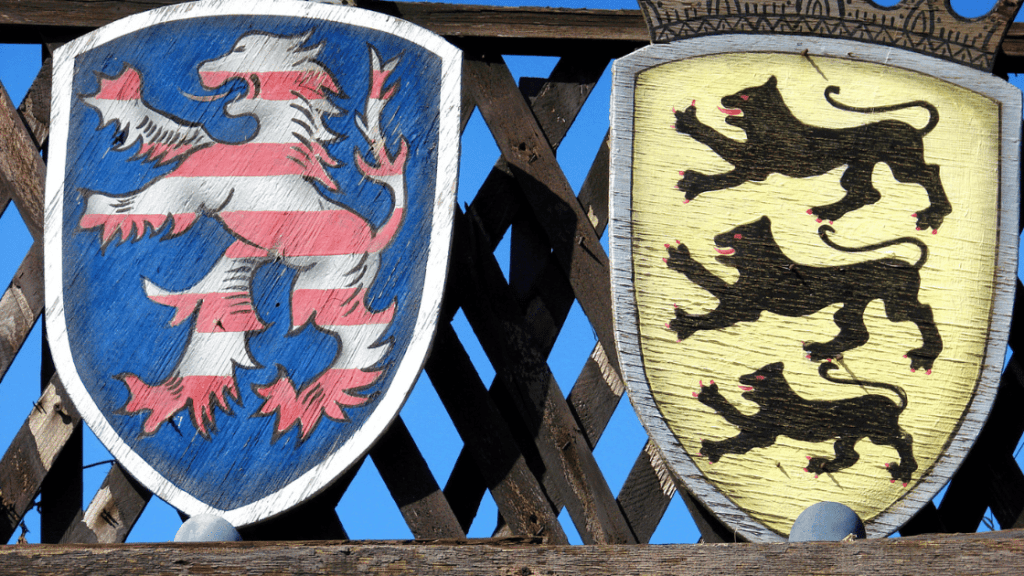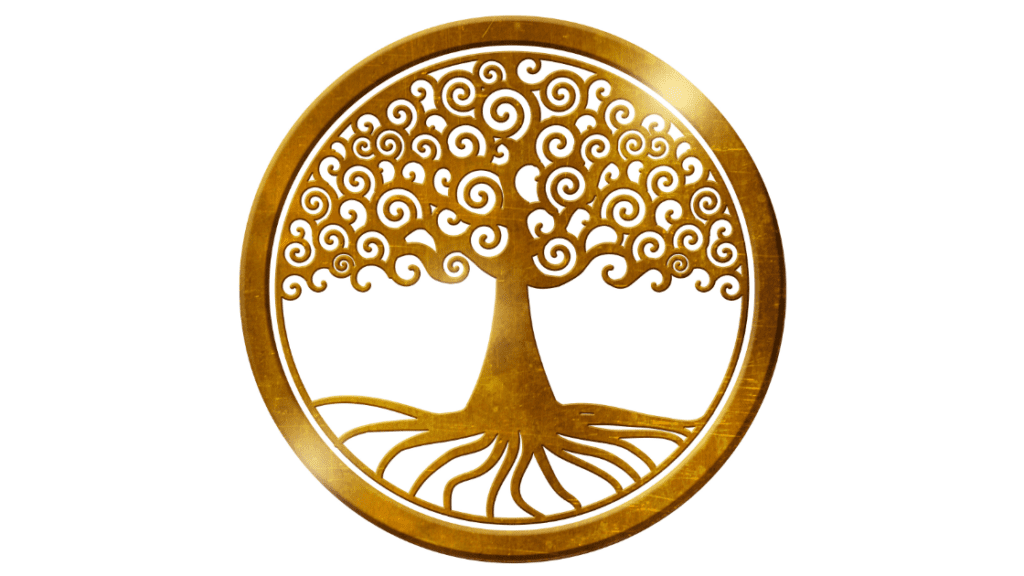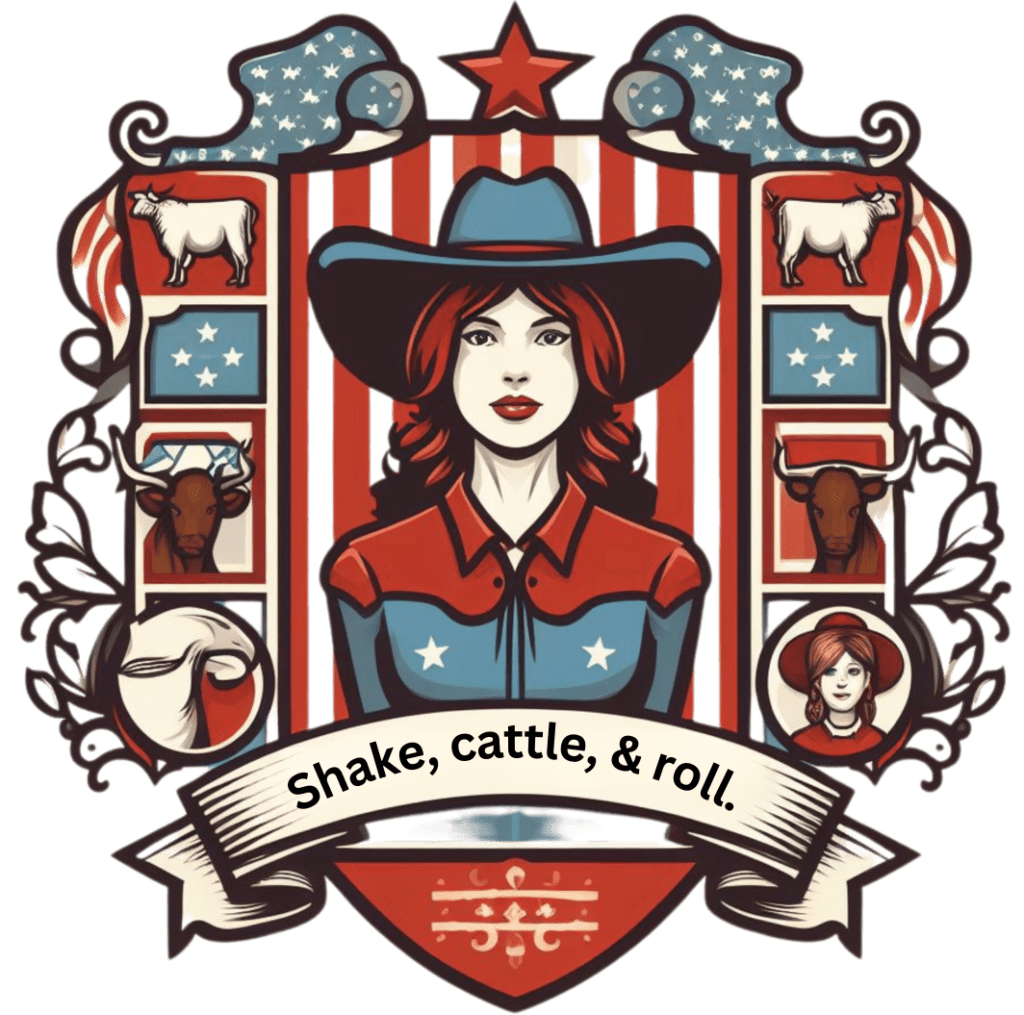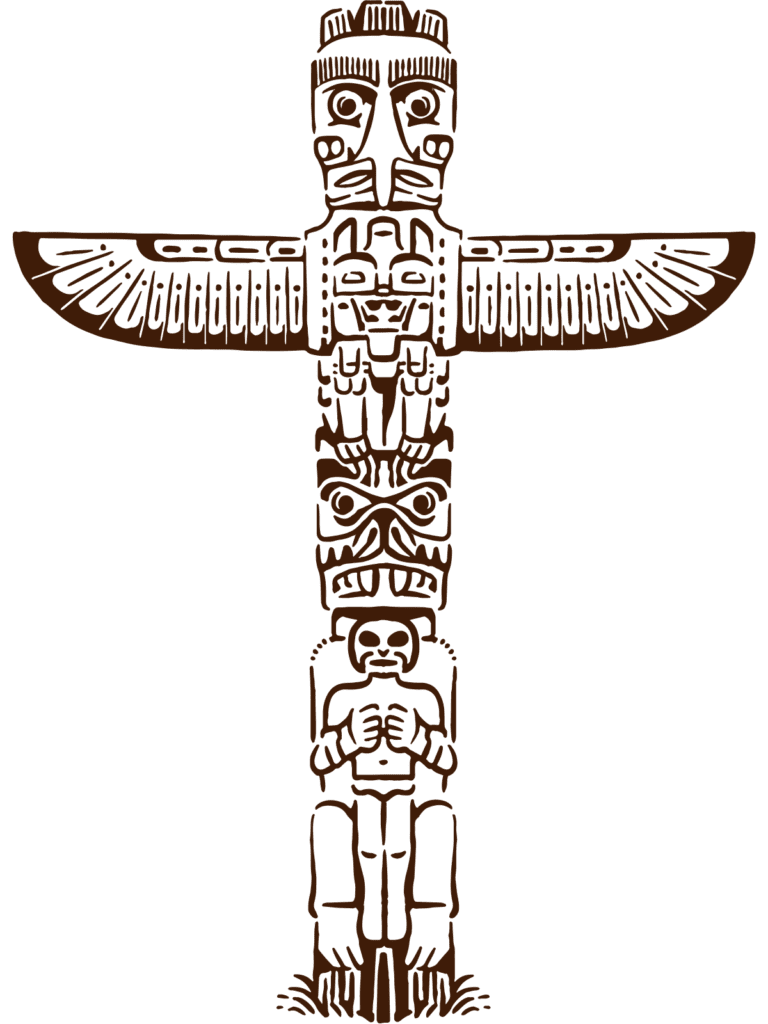Ever wonder about the evolution of popular family symbols and their meanings? The display of unique symbols is a time-honored way to convey the values, beliefs, bonds, and history that a family holds dear. Want to learn a few creative ways to incorporate them into your home, familial communications, traditions, and historical records? Using family symbols with special meanings is an excellent way to invoke connection, love, and pride in your ancestors’ accomplishments and triumphs over adversity. Throughout history, families have relied on various symbols to represent their shared identity, values, and heritage. From traditional emblems like the coat of arms to modern family logos and tattoos, these symbols hold the key to understanding the essence of family connections and the rich tapestry of our lineage.
Traditional Family Symbols and Their Meanings
The Coat of Arms: A Proud Heritage

One of the oldest and most common symbols for family is the coat of arms. Its origins can be traced back to medieval times when knights adorned themselves with distinctive emblems to represent their noble lineage. The coat of arms served not only as a recognition mark on the battlefield but also as a reflection of the family’s accomplishments and social standing. As the practice evolved, different countries developed their own unique traditions and rules regarding the design and use of coat of arms, resulting in captivating variations that still endure today.
In some countries, such as England and Scotland, a coat of arms is granted by a heraldic authority to an individual and his or her descendants. In other countries, such as Germany and France, a coat of arms is assumed by a family without any official recognition. Some families have multiple coats of arms, depending on their branches and regions.
A traditional coat of arms comprises several elements, each contributing to the family’s unique identity and history. The motto, a brief phrase or sentence, often reflects the family’s values and aspirations. The crest adorns the top of the shield, depicting an emblematic figure or object that represents the family’s core values. Shield elements, like colors and patterns, have their own symbolic significance. Supporters, often depicted as animals or mythical creatures, lend a touch of splendor and symbolism to the coat of arms.
A coat of arms is a powerful symbol of family heritage and pride. The symbol be displayed on flags, banners, seals, plates, jewelry, and other items. It can also be used as a source of inspiration for other family symbols, such as logos, mottos, and monograms.
Universal Family Symbols and their Meanings
Some symbols for family are not specific to a particular culture or lineage, but rather reflect a universal concept of family. This kind of symbol can be understood and appreciated by people from different backgrounds and traditions. Here are some examples:
The Historical Evolution of the Word “Family”
The word “family” itself carries a profound history, etymologically originating from Latin and Old French. In its earliest forms, it referred to a group of servants or household members. As societies progressed, the definition of “family” expanded to encompass the modern concept we are familiar with today – a group of related individuals bonded by love, support, and shared experiences. This evolution highlights the significance of family in human history and how it continues to shape our lives today.
The modern concept of family is more inclusive and diverse than the ancient one. It can refer to a nuclear family, an extended family, a blended family, an adoptive family, a foster family, a single-parent family, a same-sex family, or any other type of family that is based on love, respect, and care. The word “family” can also be used metaphorically to describe a group of people who share a common interest, goal, or identity, such as a sports team, a musical band, or a religious community.
The word “family” is a powerful symbol that expresses the essence of what family means to us. It can evoke feelings of warmth, comfort, and security. It can also inspire us to cherish our family members and support them in times of need.
Family Tree: A Metaphor for Connection

The family tree stands as a powerful and timeless symbol, drawing a beautiful parallel to the structure and growth of a real tree. Branches reach out, representing different generations, while roots anchor the tree, symbolizing the deep connections to one’s ancestors. A family tree can also include the names, dates, and places of birth, marriage, and death of family members.
A family tree is a useful tool for tracing our genealogy and ancestry. It can help us discover our origins, heritage, and culture. It can also reveal interesting stories and facts about our ancestors and relatives. A family tree can be drawn on paper, carved on wood, or created online using various software and websites. It can be a fun and educational activity for the whole family to work on together.
A family tree is a meaningful symbol that illustrates our family history and legacy. It can remind us of where we came from and who we are. It can also motivate us to preserve our family traditions and values for future generations.
Family Pictograph: The Essence of Togetherness

The widely recognized pictograph of a family – which typically consists of a group of stick figures that represent different family members, such as parents, children, grandparents, siblings, pets, etc.– encapsulates the essence of family unity and the nurturing bond shared among its members The pictograph can vary in size, shape, color, and style, depending on the preference and creativity of the creator.
This straightforward yet impactful symbol can often be seen in public places, such as restrooms, parking lots, playgrounds, and airports, to indicate facilities or services for families. It can also be used as a personal symbol for family, such as on stickers, magnets, t-shirts, or mugs. A family pictograph can be customized to reflect the unique composition and characteristics of a family.
The simplicity and universal appeal of the family pictograph make it a powerful emblem of togetherness and love. It can convey a sense of belonging, identity, and unity. It can also celebrate the diversity and beauty of different types of families.
Modern Expressions of Family Unity
In addition to the traditional and universal symbols for family, there are also many modern and creative ways to express our family unity and pride. These expressions can be more personal and original, reflecting our own style and taste. Here are some examples of modern expressions of family unity:
Creating a Family Logo: A Unique Identity

One way to create a unique and distinctive symbol for family is to design a family logo. A family logo is a graphic representation of a family name, initials, or motto. It can incorporate elements from the family’s cultural heritage, such as colors, patterns, shapes, or symbols. It can also include images or icons that represent the family’s interests, hobbies, or values.
A family logo can be used for various purposes, such as branding, marketing, or decorating. It can be printed on stationery, business cards, flyers, or invitations. It can also be displayed on clothing, accessories, furniture, or artwork. A family logo can be a fun and creative project for the whole family to collaborate on. It can also be a source of pride and recognition for the family.
Creating a family logo is a stylish and original way to showcase your family’s identity and personality. It can express the family’s vision, mission, and goals. It can also inspire the family to work together as a team and achieve their dreams.
Family Motto or Mission Statement: Guided by Values
Another way to create a personalized and meaningful symbol for family is to write a family motto or mission statement. A family motto is a short and catchy phrase that summarizes the family’s values, beliefs, or philosophy. A family mission statement is a longer and more detailed statement that describes the family’s purpose, vision, and objectives. Both can be written in any language, style, or tone, depending on the family’s preference and culture.
Your motto or mission statement can be used as a guide, a reminder, or a motivation for the family. It can be recited, memorized, or displayed in a prominent place, such as on a wall, a plaque, or a banner. The motto or mission statement language can also be incorporated into other family symbols, such as logos, monograms, or tattoos. Developing a family motto or mission statement can be a rewarding and enlightening exercise for the whole family to participate in. It can also be a source of inspiration and empowerment for the family.
A family motto or mission statement is a compelling and profound symbol that articulates the family’s essence and direction. It can express the family’s core values and principles. It can also challenge the family to live up to their potential and make a positive difference in the world.
Monograms and Traditions: Carrying the Torch

A third way to create a unique and elegant symbol for family is to use monograms and traditions. A monogram is a combination of letters, usually initials, that form a single design. A tradition is a custom or practice that is passed down from generation to generation. Both can be used to represent and celebrate the family’s name, heritage, and culture.
Emblazoned on items ranging from clothing to household items, these monograms symbolize continuity and connection across generations. A monogram can be used as a personal or professional signature, a decorative element, or a gift. It can be embroidered, engraved, or printed on various items, such as clothing, jewelry, stationery, or luggage. It can also be combined with other symbols, such as logos, crests, or mottos. A tradition can be used as a way of honoring the family’s ancestors, roots, and legacy. It can be a religious, cultural, or social ritual, such as a holiday, a festival, or a ceremony. It can also be a fun and memorable activity, such as a game, a recipe, or a story.
A monogram and a tradition are both elegant and timeless symbols that reflect the family’s name and heritage. They can express the family’s respect and gratitude for their past. They can also foster the family’s connection and continuity for their future.
Family Symbols for Personal Representation
Besides the traditional, universal, and modern symbols for family, there are also many personal and individual symbols for family. These symbols are not necessarily shared or recognized by other families, but rather have a special meaning and significance for a specific family or family member. Here are some examples of personal symbols for family:
Symbols in Tattoos or Artwork: Forever Connected

Tattoos and artwork offer a unique canvas for individuals to express their profound connection to family. Tattoos are forms of body art that involve inserting ink or pigments into the skin. Artwork is any form of creative expression that involves visual or auditory elements. Both can be used to represent and honor the family or a family member, such as a parent, a child, a spouse, a sibling, or a pet.
Some of the popular symbols used in tattoos or artwork to represent family are:
- Names or initials: Using the name or initials of a family member is a simple and direct way to show love and respect. The name or initials can be written in any font, style, or language, depending on the preference and culture of the person. They can also be accompanied by other symbols, such as hearts, stars, or flowers.
- Dates or numbers: Using the date or number of a significant event or milestone in the family’s life is another way to commemorate and celebrate the family. The date or number can be written in any format, such as Roman numerals, Arabic numerals, or words. They can also be combined with other symbols, such as clocks, calendars, or dice.
- Portraits or silhouettes: Using the portrait or silhouette of a family member is a way to capture and preserve their likeness and personality. The portrait or silhouette can be realistic or stylized, depending on the skill and taste of the artist. They can also be enhanced with other elements, such as colors, backgrounds, or frames.
- Quotes or phrases: Using a quote or phrase that is meaningful or inspirational for the family is a way to express and share the family’s values, beliefs, or philosophy. The quote or phrase can be from any source, such as a book, a song, a movie, or a person. They can also be written in any language, style, or tone, depending on the message and mood of the quote or phrase.
Some of the cultural symbols specific to certain lineages or origins that are used in tattoos or artwork to represent family are:



- Celtic knot: The Celtic knot is a symbol of interconnection and eternity. It consists of a continuous loop that has no beginning or end. It represents the bond and cycle of life among family members. It can also symbolize the four elements of nature: earth, air, fire, and water.
- Chinese character: The Chinese character for family is 家 (jia). It is composed of two parts: the roof and the pig. The roof symbolizes shelter and protection, while the pig symbolizes wealth and prosperity. Together, they represent the family as a source of security and happiness. The character can also be combined with other characters, such as 爱 (ai), which means love, or 和 (he), which means harmony.
- Maori spiral: The Maori spiral is a symbol of growth and evolution. It consists of a curved line that spirals outward from a central point. It represents the journey and development of the family from the past to the present and the future. It can also symbolize the sun, the moon, or the stars, which are important celestial bodies for the Maori people.
- Native American totem: The Native American totem is a symbol of identity and ancestry. The totem consists of a vertical pole that is carved with various animals, plants, or objects. Each element represents a trait or quality of the family or a family member. The totem can also serve as a guardian or protector for the family.
Tattoos and artwork are both personal and permanent symbols that display the family’s image and essence. They can express the family’s love and admiration for each other. They can also honor the family’s heritage and culture.
Objects That Represent Family: Preserving Treasured Memories
Certain objects hold profound sentimental value for families, symbolizing cherished memories and shared experiences. Heirlooms and keepsakes serve as tangible reminders of family values and traditions, bridging generations and preserving the essence of family unity. They can be anything that has a special meaning or significance for the family, such as a gift, a souvenir, a heirloom, or a keepsake.
Some of the objects that are used as symbols for family are:
- Jewelry: Jewelry is a form of adornment that can express the family’s style and taste. It can also be a way of showing the family’s affection and commitment. Jewelry can be made of precious metals, stones, or beads, and can have various shapes, sizes, and designs. Some examples of jewelry that represent family are rings, necklaces, bracelets, earrings, or pins. They can be engraved, personalized, or customized with the family’s name, initials, or symbols.
- Photos: Photos are visual records that capture the family’s memories and moments. They can also be a way of displaying the family’s appearance and personality. Photos can be taken with cameras, phones, or other devices, and can have various formats, such as prints, digital files, or albums. Some examples of photos that represent family are portraits, snapshots, collages, or slideshows. They can be framed, hung, or arranged with the family’s preference and creativity.
- Books: Books are written works that contain the family’s knowledge and wisdom. They can also be a way of sharing the family’s interests and passions. Books can be made of paper, ink, or other materials, and can have various genres, topics, and styles. Some examples of books that represent family are novels, biographies, cookbooks, or journals. They can be signed, dedicated, or annotated with the family’s name, message, or thoughts.
Objects are both personal and sentimental symbols that preserve the family’s essence and history. They can express the family’s love and appreciation for each other. They can also honor the family’s values and traditions.
Embrace Family Symbols and Their Meanings
Family symbols are not merely images or designs; they carry the weight of centuries of history, love, and shared experiences. They express the unity, heritage, and pride that bind us to our roots and each other. From the historical coat of arms to contemporary family logos and tattoos, these symbols connect us to our past while inspiring us to build a brighter future. As you explore your own unique family symbols, embrace the profound significance they hold and celebrate the tapestry of love and belonging that they represent. May they guide you on a journey of self-discovery and instill a deep sense of appreciation for the bonds that unite us as a family.
Want to learn more about family symbols? Check out these posts:
Family Symbols with Powerful Meanings from Across the Globe


